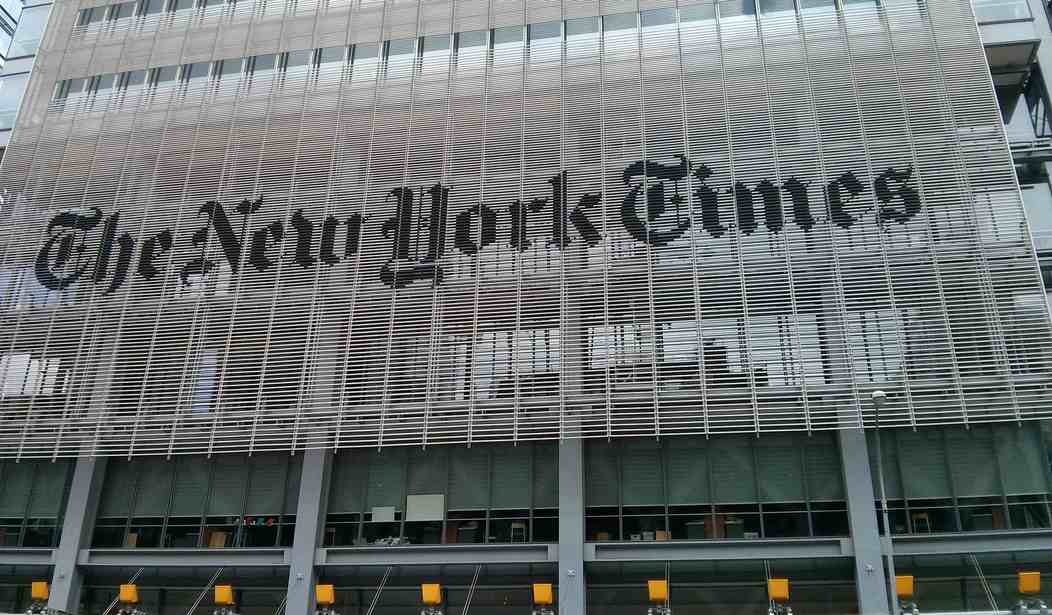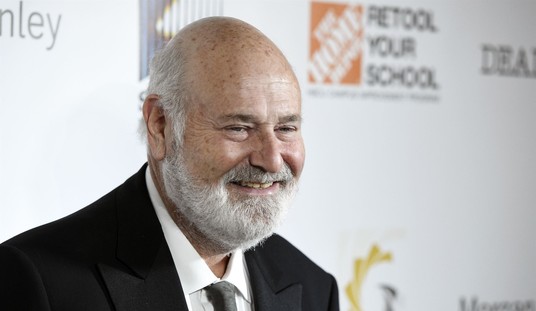Last week was an interesting week for Big Media.
First, we had the big story about how Michael Cohen had testified to the Mueller investigation that he had been directed by Trump to lie under oath during various investigations. Were it true this would indeed be a big story. It might constitute subornation of perjury, a violation of 18USC1622, good for potentially 5 years in prison, and pretty certainly an impeachable offense. You could practically see the legacy media drooling, and I’m still surprised they didn’t have tissues and lotion on the desks and towels out for the chair seats.
The only problem: by that night, the authors were saying they hadn’t actually seen any documents. By the next day, the Mueller team had taken the very unusual step, for them, of denying the story on the record and furthermore denying on background that there were any documents of the sort Jason Leopold, one of the authors, had described. (Leopold at this point had nearly disappeared, no longer being included in media opportunities and his Twitter feed apparently purged of anything but re-tweets.)
And that was just Friday and Saturday. By Sunday, the legacy media was running with the story of the Covington racist kids surrounding and taunting an Elder of the Omaha Tribe who was peacefully chanting and drumming during the March for Life. Only, as the weekend went on we found out the story was more — well, Brian Stelter of Reliable Sources thought it was complicated and no one really knew what happened. Everyone else knew that Big Media, including a lot of “but Trump is so crude and uncouth!” pinky-raising Big Media conservatives, had been taken for a ride by bunch of spam Twitter accounts, the “Black Israelites,” an activist who can’t keep his story straight, and a whole lot of “too good to check.”
In the meantime, a whole bunch of people on Left and Right were apologizing and retracting, and a couple of credible lawyers were pursuing libel suits.
But the weekend wasn’t over: shortly, it was announced that Buzzfeed, Huffington Post, and Gannett were making massive layoffs, and closing entire categories. (Huffington Post, in particular, was closing Opinion. I’d always thought the whole Huffington Post was an opinion journal, but what the hell.) Oh, and the Newseum just sold their building and closed.
Just in passing, yes, I didn’t capitalize the F in Buzzfeed. Buzzfeed is apparently sensitive about that. F them.
Of course, it wasn’t just on the left. The Weekly Standard recently shut down as well, having tried a number of different maneuvers with paywalls and cruises but having failed to attract enough revenue to pay the bills.
Now, as an accidental journalist myself, I do sympathize, I really do. But as someone who grew up in a small business, guys, I’ve got to tell you: long term, there really is only one way to succeed in business. You have to produce a profitable product people want to buy at a price people will pay for it. And protesting that you are “essential to democracy” doesn’t make much difference.
The U.S. has a free press guaranteed by the First Amendment. But that doesn’t mean anyone has to buy what you’re selling.
Now, that’s the TL;DR summary of this essay, but let’s look a little further into the details.
Business Models
I’ve worked with and for a lot of startups, and one of the questions I — and everyone else — learned to ask in startupland is “what is the business plan?” This was one of the results of the dot-com boom in the late ’90s, so nicely summarized by the boys in South Park:
Media business plans really fall into three categories: you can be sustained by advertising, you can be sustained by subscription, or you can be someone’s money-losing vanity project. Oh, there are sub-plans, like the non-profits sustained by an endowment (Harper’s Magazine) or by the government (the Corporation for Public Broadcasting), but that’s really just a question of whose vanity is being stroked.
The subscription one is pretty obvious: people like your publication so they send you money in order to receive it. This is a classic, and with platforms like Patreon, it’s become a viable method for many writers, artists, and women who don’t like wearing clothes. (As long as their politics are permitted, of course.) This business model has a long history: Michelangelo, Galileo, and da Vinci all used it.
The vanity one is also good, although it has the problem of needing enough other income to support your vanity. One of the great things about blogging is that you can set up a blog essentially for free, which makes for much less expensive vanity.
The most important model, of course, is advertising. I’ve written about advertising in the past so I won’t go into detail, but the short version is this: you pay for advertising in order to convince people to buy your product. Perfect advertising would show your ad only to people who will immediately run out and buy; perfect advertising is worth a good proportion of the profit on your product. This would be known in advertising as “perfect targeting” — you’re only showing ads to the audience who will buy. Of course, there is no perfect targeting, and a lot of the art and science of advertising lies in targeting the right population at a workable price.
Newspapers have very limited ability to target a population — in general, you might have “City” and “Suburban” editions, and a big-time paper like the New York Times or the Washington Post might have “National” and even “International” editions. One of the advertising companies I worked for was a direct-mail company, and their claim to fame was that they could target down to individual carrier routes. They then had complicated models of the demographics of every carrier’s route in the whole postal system, and they sold direct advertising to those.
The Internet changed all of that. All those tracking capabilities that get talked about so much are primarily used for one thing: it lets Google, Facebook, and Amazon (and a bunch of smaller players who buy their services) target advertising down to an individual. Most people have had the experience of googling a product and having it show up in ads for the next week, and that’s how it happens.
Publishing Economics
For all of Big Media’s self-serving preening, publishing works like every other business. You have fixed costs — what you pay just to set up the establishment — and the variable costs of making your product. Here’s a fixed cost:

And here’s a variable cost.

Some years ago, I crunched numbers from the New York Time‘s 10K financial statements and found that a single copy of the Times cost them about $4 to print, ship, and sell. At the time the cover price was $1; to make a profit they had to sell more than $3 worth of advertising or something. (Now you know why they, and many other publishers, have turned into tour organizers and sell merchandise.)
A single column of the paper version of the Times costs between 1¢ and 10¢ to print; delivering a similar amount of advertising, with full-color graphics and even video, costs between one and ten million times less, and can be targeted to the guy who just googled for fly-fishing gear instead of everyone on the Upper West Side.
When your competition can deliver a better product for 0.000001 times as much, your business model has big problems.
Can Publishing Survive?
The quickest answer is “yes.” It is going to survive, and news publishing is going to survive. In some form. But that form is going to need to accept the reality that their current business model does have big problems.
The first step of that will be observing that their fixed costs must be in line with their potential revenues. That probably means no more giant Lou Grant-style newsrooms, with copyboys and glass-walled offices.
More importantly, it means no giant printing plants, trucks delivering bales of papers to newsstands with gruff proprietors who become neighborhood institutions, and no giant newsstand stores with rows and rows of magazines on obscure topics, and a section behind a little curtain for the closest thing to pornography the local police will let the owners get away with.
And yeah, I’ll miss them too — I remember one in my old home town of Pueblo called Bollingers that my father and I probably visited twice a week. They knew us so well they remembered my birthday. But arithmetic is not mocked.
The newspapers that survive will be ones that finally give up being news papers. You can’t fight a million-to-one cost advantage. (This applies to the book-publishing arm of Big Media too. A longer discussion of this is coming soon.)
The other thing they’ll have to do, though, is remember that first lesson at the beginning of this article: you have to produce a product people want to buy, at a price people are willing to pay.
For a news organization, that’s something built on trust. The collapsing Big Media has lost that trust. First, it became clear that there were some unstated biases (remember, long before Trump there were events like Watergate and the Tet Offensive where the media legend turned out to be rather far from the facts).
But that loss of trust became a thousand times worse as the Internet made everyone a publisher. PJ Media got its name from Jonathan Klein, the CBS executive who pooh-poohed “bloggers in their pajamas” investigating the Texas Air National Guard forgeries — but not long after, both Dan Rather and Klein were gone. (Klein landed at CNN. It’s unclear if that says more about Klein or CNN.)
The real business opportunity in news is going to be someone who establishes a reputation for laying out verifiable facts, in interesting prose, with opinion diligently separated from reporting.
In other words, pretty much the opposite of what the Huffington Post, Buzzfeed, and the rest of Big Media have become. Looking at the response to the layoffs, though, it’s clear the answer to the question “what has Big Media learned?” is: absolutely nothing.










Join the conversation as a VIP Member